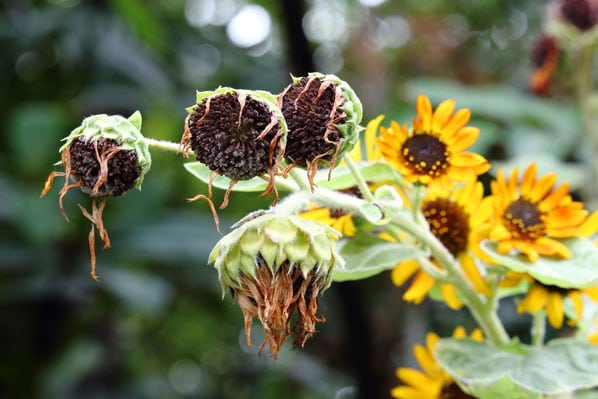Kevin McCloud: 5 Of The Easiest Ways To Make Your Home More Eco-friendly

By Abi Jackson, Press Association
Want to up ramp up those green efforts? Grand Designs’ Kevin McCloud tells Abi Jackson his top tips.
Trying to be a little more planet-friendly? Like most things in life, it starts at home – but knowing where to start or whether your efforts are worthwhile, can be tricky.
“It’s easy to think of being planet-friendly as something we can buy, which often just adds to the problems of environmental damage,” says Grand Designs presenter and home-style guru Kevin McCloud.
“There’s no doubt that, by contrast, the correct things we should be doing are: A) changing our behaviour, which is hard; B) consuming less, which is hard to get used to; C) sharing our resources more, which is often annoying, and D) thinking ecologically about our wider environment, which is very hard.
Having said that, there are some accessible ways of making our homes more environmentally responsible.”
Wondering what those are? Here, McCloud shares five “easy” ways to make our homes more eco-friendly…

- Rely less on central heating
“Start with the simple things, like turning the thermostat down to 18 or19 degrees rather than 21, putting on an extra pullover instead, makinga hot water bottle at bedtime, and buying some slippers.”
- Go for straightforward insulation methods first
“We could all probably insulate our attics more, draught-proof our windows and doors, and maybe fit secondary or double glazing. Insulation may not seem sexy, but it’s much cheaper and delivers quicker cash and energy savings than solar panels or a heat-exchanging thermo-dynamic hybrid heat pump with go-faster stripes,” says McCloud. “Men, I’m afraid, tend to be seduced more by kit than reason. If you find yourself using the word ‘tech’, be wary – my bitter experience is that the more complicated you make your home, the more there is to go wrong.
“Make sure your home is fully insulated with good airtightness and simple ventilation systems. It’s called a fabric-first approach. Only then should you consider the bolt-on technology.”

- Check out new glazing technologies
“New glazing technologies fascinate me,” says McCloud, “because the windows in our homes are effectively holes through which heat pours. Metal coatings on glass and vacuum-extracted systems, like Pilkington’s Spacia, deliver excellent performance – I’m trialling them to see how they perform over time.”
- Be mindful of where things come from and how they’re made
“When I buy free-range tomatoes or FairTrade toothpaste at the supermarket, the product is usually accompanied by a little story and some pictures of the people that made it. Lovely. That makes me feel good and I’m comforted by the legitimacy of the endorsement of the Soil Association, or whichever. Knowing where your meat comes from, who grew it, and its full ‘chain of custody’ weirdly seems to improve the flavour too – so I’m a champion of authenticity and the true narrative of things, because it connects the people who make things to the people that consume them, and seems to damage the planet and all its species a little less along the way,” says McCloud – and he extends the same principles to items he buys for his home.
“Britain is still the largest importer of illegal (illegally felled that is) timber and timber products in Europe, which is shocking. I wrote my book, The Principles Of Home, to partly address all this; it’s shameful that when you or I buy a sofa, some curtain fabric, a pair of jeans or a dining table, there is virtually zero information about the welfare conditions in the factory where it’s from, the chemicals used in manufacture, or the damage wreaked on the environment in its making.
I’ve now started asking retailers for the full story of what they sell, and I suggest you do the same every time you buy something.”
- Tap up the experts
“If you’re designing a house from scratch, talk to an architect who’ll understand designing for orientation, passive solar gain, maximum winter sunlight, shading and minimum summer overheating. You can design in thermal mass with heavy concrete floors or earth walls, humidify and cool the airflow through the house with a buried air-duct or a pond outside a window, allow hot air to be purged through a skylight at the top of the house and allow for some cooling cross-ventilation. There. Easy. So speak to an architect.”

Kevin McCloud will be appearing at Grand Designs Live at The NEC, Birmingham, from October 10-14, 2018. To claim your free pair of weekday tickets, visit granddesignslive.com and use code PRESSASSOC. Offer live from September 25 until October 5. T&Cs apply. For details, see granddesignslive.com/whats-on/1228-t-c-s
To discus the impact any of these or other improvements may have on your property value, please call your local office – details can be found here https://www.mccarthyholden.co.uk/branches/





